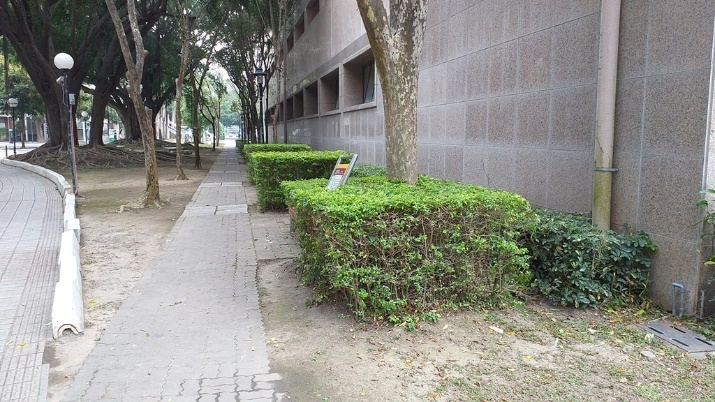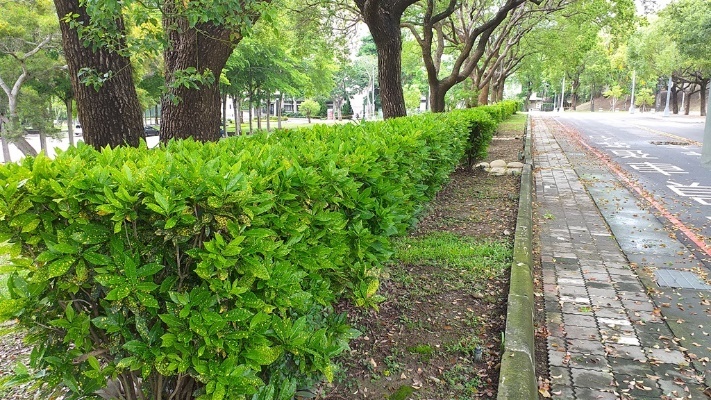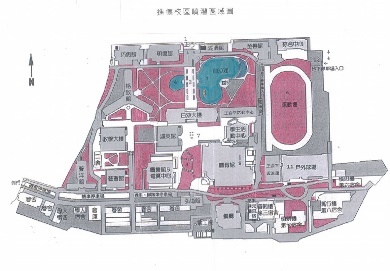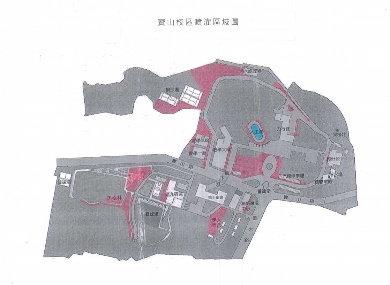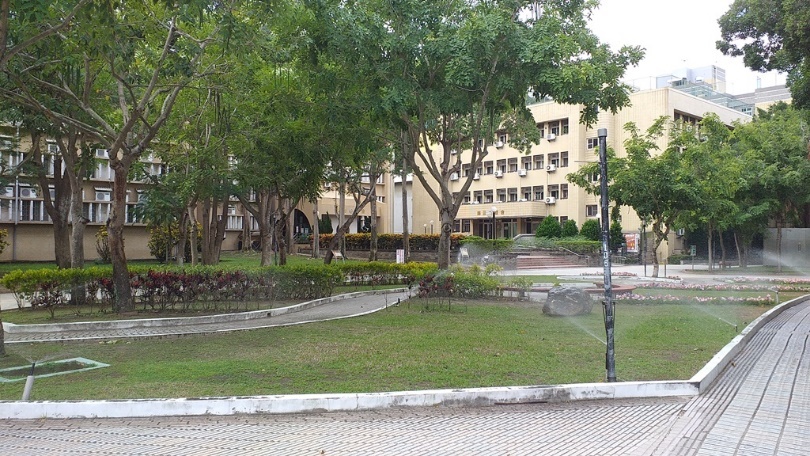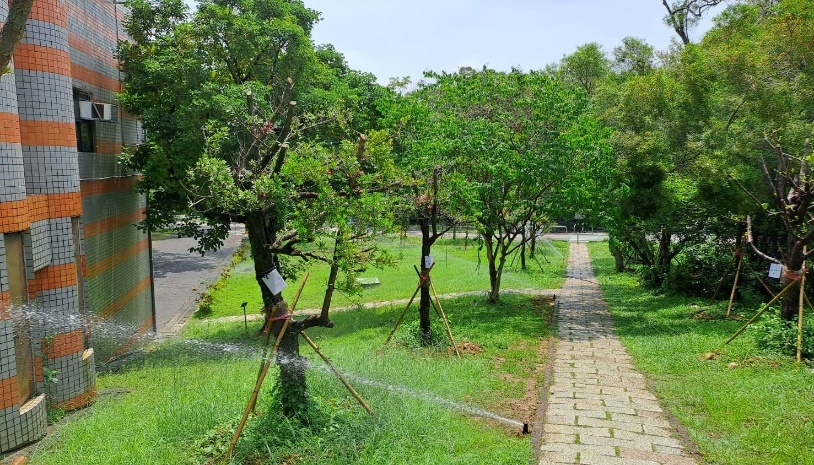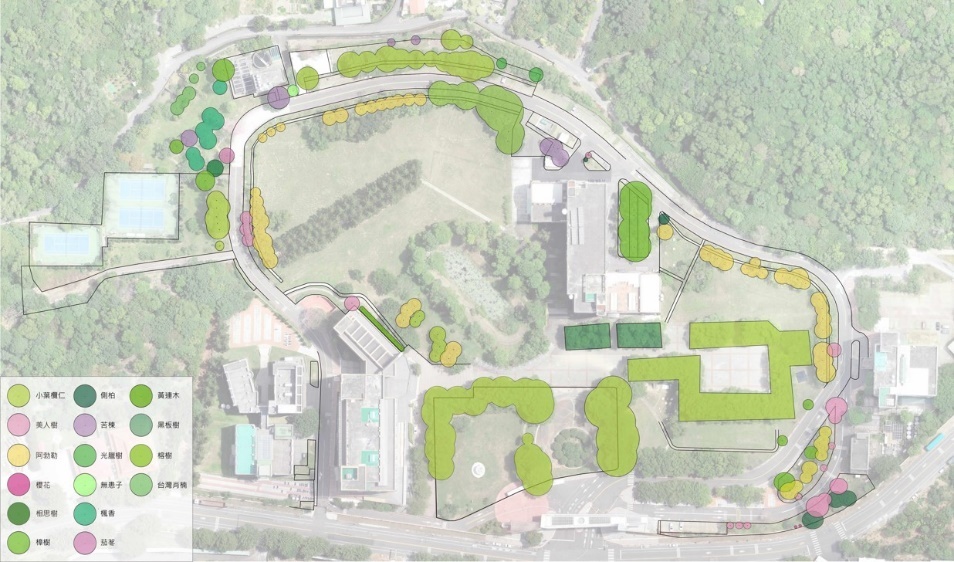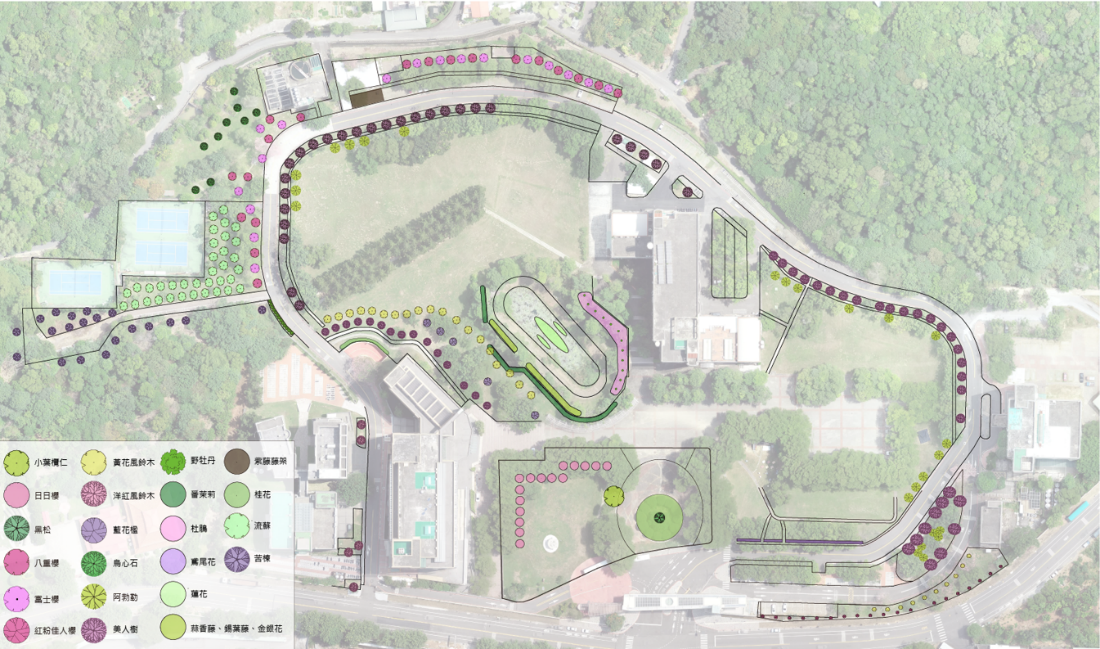SDG 6.3.5 Water-conscious planting
1. The University thoroughly discusses and decides on all campus construction, plant cultivation, and removal activities during the Campus Construction Review Committee meetings before carrying them out. In efforts to conserve water, NCUE has cultivated plants such as Dwarf Ixora, Garden Croton, Duranta Erecta, Common Jasmin Orange, Painted Copperleaf, West Indian Lantana, and Chinese Perfume Plant (Figures 1-2). Other varieties, such as Brunfelsia, Garlic Vine, Japanese Honeysuckle, Irises, Chinese Wisteria, and Melastomes will be added to the Baoshan campus to further reduce water consumption.
|
|
|
Figure 1. The Jinde Campus - Duranta Erecta grown along the trail near the Gymnasium |
|
|
|
Figure 2. The Baoshan Campus - Garden Croton grown at the entrance of the campus |
2. Additionally, sprinkler irrigation systems have been installed at both campuses (Figures 3-6). The systems were designed based on the principle of using the minimum possible number of sprinklers with maximum possible coverage area, and the daily irrigation time is strictly controlled to ensure optimal water supply for plants as well as to effectively save water consumption.
|
|
|
Figure 3. Sprinkler irrigation system of Jinde campus |
|
|
|
Figure 4. Sprinkler irrigation system of Baoshan campus |
|
|
|
Figure 5. The Jinde Campus - Irrigation system at the student dormitory garden |
|
|
|
Figure 6. The Baoshan Campus - Lawn sprinkler system at the College of Technology |
3. The remodeling of the Baoshan Campus is planned with the donation of US$500,000 by NCUE’s alumnus Hsiao Jui-fen (Chairman of Dah Lih Puh). Specifically, the existing tree species on the campus will be retained and reorganized (as shown in Figure 7), and green and tall black pines will be planted at the campus gates to create a composed yet invigorating image. Additionally, crepe myrtle belt will be planted around the gate to add an engaging color to the environment. The three colleges on the campus will be connected by pan-campus roads with golden shower and silk floss trees on both sides and decorated with native Taiwanese species, such as Magnolia Compressa, Chinese Fringetree, and Chinaberry (as shown in Figure 8). The goal is to strengthen soil conservation and water management, as well as freshen the campus atmosphere.
|
|
|
Figure 7. Location of tree species to be reserved at Baoshan campus |
|
|
|
Figure 8. Location of new trees to be planted at Baoshan campus |

